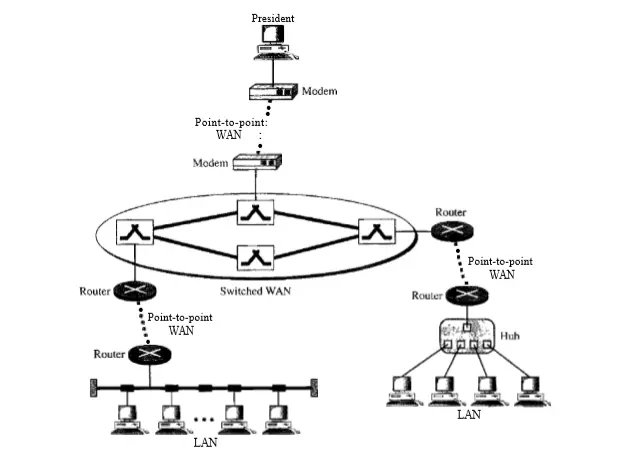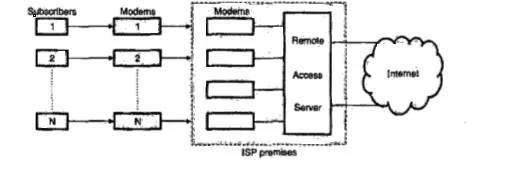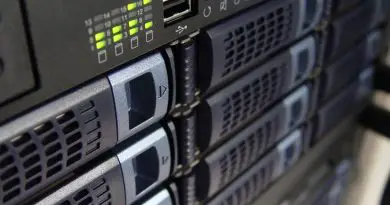Application Layer – Internet Service Providers (ISP) And MCI (the backbone of the internet)
In today’s world, the changes occurred by the vehement waves (power) of the internet are clearly visible. Moreover there will be very less people who remain untouched by this incremental outcome of large scale digitization.
So have you ever wonder about the basic technicalities involved in this smooth functioning of this wonderful application (internet) in our daily life. How the so-called pillars(backbone) of this digitization revolution is possible with the help of ISP (internet service providers).
If you want the details regarding these questions, then read further. Internet is the basic thing , after acquiring an internet connection only we can explore its different applications (email , file sharing etc ) .
Internet today is basically made up of many wide and local area networks joined by connecting devices and switching stations.
It is thus difficult to give an accurate representation of the internet because it is continually changing-new networks are being added, existing networks are adding addresses, and the networks of defunct companies are being removed.
Today most end-users who want Internet connection use the services of Internet service providers (lSPs). There are international service providers, national service providers, regional service providers, and local service providers.
Internet service providers (ISPs) all over the globe provide diverse alternatives and packages to the public to give them access to the internet. With the privatization of the net services,numerous ISPs, are providing their services in India and all over the world. The major internet providers currently are :
- Videsh Sanchar Nigam Limited (VSNL).
- Mahanagar Telephone Nigam Limited (MTNL)
- Satyam Infoway Limited (Satyam online)
- Bharti BT Internet Pvt. Limited
Now let us see the hierarchical structure of internet providers. ISP’s are basically divided into different tiers (levels) . Let us understand this first (different ISP tiers) .
International Internet Service Providers
At the top of the hierarchy , there present the international service providers that connect nations together.
National Internet Service Providers
The national Internet service providers are the backbone networks created and maintained by specialized companies. There are many national ISPs operating in North America, some of the most well known of them are SprintLink, PSINet, UUNet Technology, AGIS.
In order to provide connectivity between the end users, these backbone networks are connected by complex switching stations (normally run by a third party) called the network access points (NAPs).
Some national ISP networks are also further connected to one another by private switching stations called peering points.
Regional Internet Service Providers
Regional internet service providers or the regional ISPs are smaller ISPs that are connected to one or more national ISPs. They are present at the third level of the hierarchy with a smaller data rate.
Local Internet Service Providers
Local Internet service providers basically provide direct service to the end-users. The local ISPs can further be connected to regional ISPs or directly to national ISPs. Most end users are normally connected to the local ISPs.
Who is the owner of the internet?
The internet is a decentralized network and nobody runs or owns it. There is no organization or enterprise (private company) that controls the working and activity on the internet . However, there are a few businesses that coordinate and guide the technical components of the internet. They are
- Internet Engineering Task Force (IETF)
- Internet Research Task Force (IRTF)
- Internet Architecture Board (lAB)
The Internet’s communication protocols are developed and maintained by the IETF. The protocols are the methods by which computers on the Internet are connected.The long term research problem which may be critical to the Internet is looked into by the RTF. Any major changes coming from the IETF are ratified by the lAB.
Internet Topology (configuration)
The Internet is a worldwide network of computers. All the computers and other devices in the internet are organized in a hierarchy which simplifies its structure. Below figure shows different parts of the Internet hierarchy.

• A very high-speed backbone operated by MCI is at the top whereas the users and businesses are at the lowest side of the hierarchy. MCI has the most autonomous system connections(consisting of RAS and modems discussed later in the post), followed by Sprint, AT&T, Level 3, and Cable & Wireless.
• In between the top and bottom layers, there are intermediate layers of hierarchy i.e. Network Access Providers (NAP) and Internet Service Providers (ISP).
• We will now understand how a user gets connected to the Internet.

A home user dials into an ISP using a telephone connection and a MODEM. The ISP buys bandwidth in wholesale and sells it in retail making profit.
• Some ISPs provide additional services such as web site designing. web site hosting etc.
• The ISP routes the user’s call to NAP. An important aspect is to connect these NAPs to each other for allowing computers to send messages to one another. This is a complicated process.
• Finally the high-speed backbone was conceived and operated by MeL Specific points on this backbone are identified as Network Access Points (NAPs again). Any Network Access Provider connects to the backbone at one of its closest Network Access Point.
• Thus a home user dials into an ISP, the ISP connects to one of the NAPs and the NAP, in turn, connects to the high-speed backbone. Now the user can communicate with anyone else on the Internet.

Internal architecture of ISP
ISP basically provides Internet access to subscribers. In addition, optionally it can provide some other services such as email access etc. Each of these services requires additional hardware/software in the ISP. The logical architecture of an ISP is as shown in below figure:

The ISP normally buys a number of IP addresses for its subscribers. depending on how many users are going to use the Internet . When a user connects to an ISP. the ISP provides one of the IP addresses available with it and which is not being used currently.
This helps to identify the connection between the user and ISP uniquely. Note that this IP number allotted to the user is temporary and is used by the user only as long as it is connected to the Internet . The basic connection and communication taking place between a subscriber and ISP are as follows :
Subscriber buys an Internet connection from an ISP. He gets a user ID, password and telephone number of ISP. This user ID and password are saved at ISP database on a Remote Access Server (RAS).
The subscriber MODEM calls the ISP number.
The MODEM at·the subscriber tries to establish a connection with the ISPs MODEM using this call. A dedicated telephone connection is established after this call between the interested customer, and ISP.
The ISP MODEM sends an acknowledgment signals to subscribers MODEM.
This message is passed to the dial up program of the subscriber to indicate that the ISP is ready to accept the connection.
The dial-up program starts the authentication procedure. It sends a message asking for the user ID and password from the user and sends them to ISP.
The ISP’s MODEM sends this information to the RAS. The RAS checks the user ID and password. If they are valid, then it sends a valid message back to user’s MODEM otherwise sends an error message.
If subscriber’s user ID and password are authenticated then it is virtually connected to the Internet.
The subscriber can access all Internet services. The ISP acts as a mediator between subscribers and Internet.
Internal aspects of ISP architecture
An ISP internally consists of a set of MODEMs, RAS, SMTP server, web server, and routers as well .
• The user (subscriber) connects to the ISP via modems as discussed earlier. The ISP modem then connects the subscriber to RAS and the RAS does the authentication process as discussed earlier.
• The SMTP server stores the subscriber’s emails until the time the subscriber connects to the Internet.
• The web server is used for two purposes. First, it can be used by the ISP to set up a portal and secondly it can store the web pages created by the subscriber.
• RAS output is connected to two routers. There can be many more routers used actually. They are used for routing the user’s requests to the Internet.
Finally we reach the end of this informative post. In the next post, we will look into the next vital layer in the TCP/IP model i.e. Transport Layer.So stay tuned.

Aric is a tech enthusiast , who love to write about the tech related products and ‘How To’ blogs . IT Engineer by profession , right now working in the Automation field in a Software product company . The other hobbies includes singing , trekking and writing blogs .




